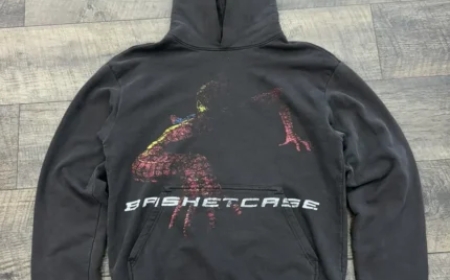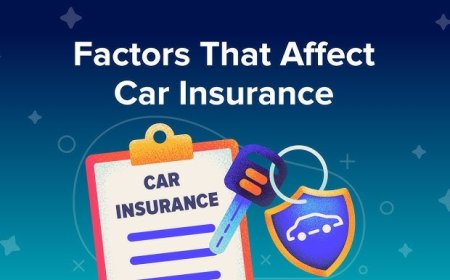How to Drive Safely in Snow Storms in Columbus
How to Drive Safely in Snow Storms in Columbus Driving in snow storms is one of the most challenging aspects of winter travel, especially in cities like Columbus, Ohio, where sudden snowfall, icy roads, and fluctuating temperatures can turn routine commutes into hazardous journeys. Unlike regions with consistent, predictable winter conditions, Columbus experiences rapid weather shifts—snow turning
How to Drive Safely in Snow Storms in Columbus
Driving in snow storms is one of the most challenging aspects of winter travel, especially in cities like Columbus, Ohio, where sudden snowfall, icy roads, and fluctuating temperatures can turn routine commutes into hazardous journeys. Unlike regions with consistent, predictable winter conditions, Columbus experiences rapid weather shifts—snow turning to sleet, then freezing rain—often without much warning. This unpredictability makes preparedness and informed driving behavior critical for safety. Whether you’re a lifelong resident or new to the area, understanding how to navigate snowy conditions in Columbus isn’t just about avoiding accidents; it’s about preserving lives, reducing property damage, and maintaining mobility during critical winter months. This guide offers a comprehensive, step-by-step approach to driving safely in snow storms specifically tailored to Columbus’s unique climate, road infrastructure, and traffic patterns.
Step-by-Step Guide
1. Monitor Local Weather Forecasts Daily
Before you even think about getting behind the wheel, check the weather. Columbus is served by the National Weather Service office in Wilmington, Ohio, which provides hyperlocal forecasts for Franklin County and surrounding areas. Use trusted sources like the National Weather Service website, the NOAA Weather Radio, or apps like Weather Underground or AccuWeather that offer minute-by-minute precipitation and temperature changes. Pay attention to terms like “blizzard warning,” “ice storm warning,” or “winter storm warning”—these indicate conditions that require serious caution or avoidance of travel entirely.
Don’t rely on general regional forecasts. Columbus’s microclimates mean that snowfall can vary significantly between downtown, the suburbs of Upper Arlington, and areas near the Scioto River. A light dusting in the city center might be a foot of accumulation in the northern neighborhoods. Always know what’s expected in your exact route.
2. Prepare Your Vehicle Before the Storm Hits
Preparation is the single most effective way to reduce risk. Do not wait until snow begins to fall to check your vehicle. Start with these essential tasks:
- Check tire tread and pressure. Winter tires are ideal, but even all-season tires must have at least 6/32” of tread depth for safe snow traction. Use a penny test: insert a penny upside down into the tread. If you can see the top of Lincoln’s head, replace the tires.
- Fill your windshield washer fluid reservoir with a winter-grade solution rated to -20°F or lower. Regular fluid can freeze and crack your nozzles.
- Ensure your battery is in good condition. Cold weather reduces battery efficiency. If your battery is over three years old, have it tested at a local auto shop like O’Reilly Auto Parts or Firestone Complete Auto Care.
- Clear all snow and ice from windows, lights, roof, and hood. Snow on the roof can slide forward during braking and obstruct your view. Ice on headlights and taillights reduces visibility for you and others.
- Keep your gas tank at least half full. This prevents fuel line freeze-up and gives you room to maneuver if you get stranded.
3. Plan Your Route Strategically
Columbus has a mix of major highways (I-71, I-70, I-270), arterial roads (High Street, Broad Street, Olentangy River Road), and residential streets. Not all roads are treated equally during snow storms. Primary routes like I-270 and I-71 are plowed and salted first, often within two hours of snow accumulation. Residential streets may take 12–24 hours to clear.
Use real-time traffic tools like Google Maps or Waze, which show current road conditions and reported hazards. Avoid secondary roads with steep grades, such as those in the Hilltop or near the Olentangy Trail, until after plowing. If you must drive, stick to major corridors. Consider using alternate routes like Morse Road instead of High Street during heavy snow to avoid congestion and slower-moving traffic.
4. Drive at Reduced Speeds—Even When It Seems Safe
One of the most common mistakes drivers make in Columbus is assuming that because the snow has slowed or stopped, roads are safe. In reality, snow compaction, black ice, and refreezing occur rapidly after daylight hours. Always reduce your speed by at least one-third of the posted limit. On a 55 mph highway, that means driving no faster than 35–40 mph in moderate snow. On residential streets with 25 mph limits, slow to 15–20 mph.
Speed limits are designed for dry pavement. In snow, braking distances can increase by 10 to 40 times. If you’re traveling too fast, even with anti-lock brakes, you won’t stop in time for a stopped vehicle or pedestrian.
5. Increase Following Distance Dramatically
In dry conditions, a three-second gap between you and the vehicle ahead is recommended. In snow, extend that to at least eight to ten seconds. This gives you enough time to react to sudden stops, hydroplaning, or vehicles losing control.
Watch for brake lights ahead. If the car in front of you brakes, begin slowing immediately—even if you think you have room. Anticipate that the car in front might skid or slide. Never tailgate, even if the driver ahead is moving slowly. They may be doing so for safety.
6. Use Gentle Inputs for Steering, Braking, and Acceleration
Aggressive maneuvers are the leading cause of winter crashes. Avoid sudden turns, hard braking, or rapid acceleration. If you need to brake, apply steady, light pressure. If your vehicle has anti-lock brakes (ABS), keep your foot firmly on the pedal—do not pump the brakes. If you don’t have ABS, gently pump the brake to avoid locking the wheels.
When turning, slow down before entering the curve, then maintain a steady, light throttle through the turn. Accelerating while turning can cause your tires to lose traction, especially on bridges or overpasses, which freeze first.
7. Know Where Ice Forms in Columbus
Ice is the silent killer. It’s invisible and forms in specific locations:
- Bridges and overpasses. These freeze before roadways because cold air circulates above and below them. Always slow down on I-71 over the Scioto River or on I-270 near the Franklin County line.
- Shaded areas. Roads under tree cover or between tall buildings (like downtown Columbus or near OSU’s campus) stay icy longer.
- Early morning and late evening. Temperatures drop below freezing after sunset. Even if the snow stopped hours ago, black ice can form on untreated roads.
- Intersections and stop signs. Vehicles frequently stop and start here, creating patches of melted snow that refreeze into slick surfaces.
When approaching any of these areas, assume ice is present. Reduce speed and avoid any sudden movements.
8. Use Your Lights—Even During Daylight
Many drivers forget to turn on headlights during snow storms. This is a dangerous habit. Snow reduces contrast and depth perception. Turning on your headlights—even during the day—makes your vehicle visible to others from up to 50% farther away. Use low beams. High beams reflect off snow and reduce visibility further.
Also, ensure your taillights and brake lights are clean. A driver behind you may not see you stop if your lights are covered in snow.
9. Avoid Cruise Control Completely
Cruise control disables your ability to modulate speed manually. On snowy or icy roads, if your wheels lose traction, cruise control may accelerate the wheels, worsening a skid. Turn it off before entering snowy conditions and leave it off until roads are completely clear and dry.
10. If You Skid, Stay Calm and Steer Into the Skid
Skidding is not a failure—it’s a common occurrence in winter driving. If your rear end starts to slide:
- Take your foot off the accelerator.
- Do not slam the brakes.
- Steer gently in the direction the rear of the car is sliding.
- Once the car straightens, slowly straighten your steering wheel.
For example, if your rear slides to the right, turn your wheel slightly to the right. Overcorrecting can cause a spin in the opposite direction. Practice this technique in an empty, snow-covered parking lot before the storm hits.
11. Prepare for Being Stranded
Even with the best preparation, you may get stuck or involved in a minor collision. Always keep an emergency kit in your vehicle. Essentials include:
- Blankets or a sleeping bag
- Non-perishable snacks and bottled water
- A flashlight with extra batteries
- A phone charger (portable power bank)
- A small shovel
- Sand or cat litter for traction
- Ice scraper and brush
- Warm gloves and a hat
Stay in your vehicle if you’re stranded. It’s easier for rescuers to find a car than a person walking in a snowstorm. Run the engine for 10 minutes every hour to stay warm, but keep a window cracked to prevent carbon monoxide buildup.
12. Know When to Stay Off the Roads
Not every snow storm requires travel. Columbus City and Franklin County often issue “Winter Weather Travel Advisories” or “Snow Emergency Declarations.” When these are active, non-essential travel is discouraged. Schools, businesses, and government offices may close. If you don’t have to go out, don’t.
Check the City of Columbus website or follow @ColumbusGov on social media for real-time updates. If emergency services are overwhelmed or roads are impassable, staying home is the safest choice.
Best Practices
1. Drive with Anticipation, Not Reaction
Safe winter driving is about reading the road ahead. Look farther down the road than you normally would. Watch for changes in the color of the pavement—wet, shiny patches may be ice. Watch for other drivers’ behavior. If someone ahead is slowing unnecessarily, they may be reacting to a hazard you haven’t seen yet. Anticipating problems gives you more time to respond safely.
2. Avoid Distractions Completely
In snow, your attention span must be razor-sharp. Put your phone away. Avoid eating, adjusting the radio, or interacting with passengers. Even a two-second distraction can be fatal on icy roads. If you need to make a call or send a message, pull over safely first.
3. Be Extra Cautious Around Buses and Emergency Vehicles
Public transit buses in Columbus operate year-round and carry dozens of passengers. They take longer to stop and may struggle on hills. Give them extra space. Emergency vehicles may be traveling faster than normal, even in snow, to reach calls. Always yield by pulling over completely and stopping, even if you’re on a one-way street.
4. Recognize the Signs of Hypothermia and Frostbite
If you’re stranded or walking in the snow, know the symptoms. Shivering, slurred speech, confusion, and numbness in fingers or toes are early signs of hypothermia. Frostbite causes skin to turn white or grayish-yellow and feel hard or waxy. If you or someone else shows these signs, get to a warm place immediately and seek medical help.
5. Learn Your Vehicle’s Handling Characteristics
Not all cars handle the same in snow. Front-wheel drive vehicles generally have better traction in snow than rear-wheel drive. All-wheel drive helps with acceleration but doesn’t improve braking. SUVs and trucks may feel more stable, but their higher center of gravity increases rollover risk on icy turns. Know your vehicle’s limits and drive accordingly.
6. Avoid Passing Other Vehicles Unless Absolutely Necessary
Passing in snow is risky. Visibility is reduced, road conditions vary, and the vehicle you’re passing may be slowing for a reason. If you must pass, ensure you have a clear, long stretch of road with no oncoming traffic and ample space to return to your lane. Never pass on curves or hills.
7. Use Snow Chains or Traction Devices Only When Required
Snow chains can provide extra grip but are difficult to install and can damage roads if used on bare pavement. Columbus does not require chains, but if you’re traveling on rural routes outside the city (like SR-317 or SR-161), consider them if conditions are severe. Always follow manufacturer instructions and remove them as soon as you hit clear pavement.
8. Keep Your Windows and Mirrors Clear at All Times
Even a small amount of ice on your side mirror can block your view of a merging vehicle. Use your defroster and scraper continuously during your drive. Keep a microfiber cloth in your glove compartment to wipe fog from the inside of your windshield.
9. Don’t Rely on Technology Alone
Advanced driver-assistance systems (ADAS) like lane assist, automatic braking, and adaptive cruise control are helpful—but they are not foolproof. Sensors can be blinded by snow, and systems may not detect pedestrians or stopped vehicles in low-visibility conditions. Always be ready to take manual control.
10. Educate Your Passengers
Children and passengers should know not to distract the driver. Seat belts must be worn at all times. If you have pets, use a harness or carrier. Loose items in the car can become dangerous projectiles during sudden stops.
Tools and Resources
1. Columbus Department of Public Works Snow Plow Tracker
The City of Columbus operates a real-time snow plow tracking map on its official website. This tool shows the location of active plows, which routes are being serviced, and estimated completion times. Use this to plan your route around areas that have just been cleared or are still in progress. Visit columbus.gov/snowplow-tracker to access the map.
2. Ohio Department of Transportation (ODOT) 511 System
ODOT’s 511 service provides live camera feeds, road condition reports, and travel alerts for all state highways. Call 511 or visit ohiodot.gov/511 to check conditions on I-71, I-70, I-270, and other major corridors. The system also includes webcam views of key intersections, so you can see exactly what the road looks like before you drive there.
3. Winter Weather Apps
Recommended apps for Columbus drivers:
- AccuWeather – Offers “MinuteCast” for precipitation timing and snow accumulation forecasts.
- Waze – Crowdsourced reports of accidents, ice patches, and stalled vehicles.
- Google Maps – Shows real-time traffic speed and road condition overlays.
- NOAA Weather Radar – Shows radar loops to track storm movement.
4. Local News Stations for Real-Time Updates
TV and radio stations like WBNS 10TV, WCMH NBC4, and 97.1 The Fan provide continuous weather updates during storms. They often interview DOT crews, report on road closures, and advise on travel bans. Tune in during morning and evening commutes for the latest guidance.
5. Emergency Roadside Assistance Services
While you should avoid needing assistance, it’s wise to have a plan. AAA offers 24/7 service in Central Ohio. Some credit cards and auto insurance policies include roadside help. Keep the numbers saved in your phone. If you’re stranded, call for help rather than attempting risky self-rescue.
6. Free Snow Removal Kits from City Programs
Each winter, the City of Columbus distributes free snow shovels and salt to residents in certain neighborhoods. Check with your local council office or visit the city’s website to see if you qualify. Many community centers also offer sand or kitty litter for traction at no cost.
7. OSU Extension Winter Driving Workshops
The Ohio State University Extension offers free, in-person and virtual winter driving safety workshops each fall. These sessions include hands-on skid recovery training on closed courses and are open to the public. Visit extension.osu.edu for schedules and registration.
Real Examples
Example 1: The January 2022 Snow Emergency
In January 2022, Columbus received over 14 inches of snow in 36 hours, accompanied by wind gusts up to 35 mph. Visibility dropped to near zero in some areas. Many drivers ignored travel advisories and attempted to commute to work. Over 200 vehicle crashes were reported in Franklin County alone. One driver on I-71 near the I-270 interchange lost control, hit a guardrail, and was trapped for four hours before rescue. He had no emergency kit and his phone died. Had he stayed home or prepared properly, the outcome could have been far different.
Example 2: The Black Ice Incident on Morse Road
In February 2021, a mother driving her two children to school on Morse Road near the Scioto River Bridge encountered a patch of black ice. She slowed appropriately but didn’t reduce speed enough for the curve. Her vehicle slid sideways and collided with a parked car. Fortunately, no one was seriously injured. Later, she learned that the city had not yet salted that stretch because it was under tree cover and hadn’t been reported as hazardous. This incident led to a city-wide review of ice-prone locations and improved salting schedules.
Example 3: The Safe Commute That Made the News
In December 2023, a Columbus delivery driver named Marcus Jenkins drove 12 hours straight through a snowstorm to deliver medical supplies to a hospital. He used the ODOT 511 app to reroute around closed roads, kept his tank half-full, and carried blankets, snacks, and a shovel. He didn’t rush. He didn’t take risks. He arrived on time. His story was featured on WBNS 10TV as an example of responsible winter driving under pressure.
Example 4: The Teen Driver Who Learned the Hard Way
A 17-year-old from Westerville was texting while driving during a light snowfall. He didn’t reduce speed and failed to notice a stopped school bus. He rear-ended it at 30 mph, causing minor injuries to three children. The crash was captured on a dashcam. The teen’s license was suspended for six months. His parents were fined for failing to supervise. This case underscores the deadly combination of inexperience and distraction in winter conditions.
Example 5: The Community That Pulled Together
In a neighborhood near Easton, residents formed a volunteer snow-patrol team. They checked on elderly neighbors, shoveled driveways, and reported icy patches to the city. One resident installed a small traffic sign near his driveway that read: “SLOW—ICE HERE.” The city later adopted the sign as a permanent fixture. This grassroots effort reduced local accidents by 70% over the winter season.
FAQs
Do I need winter tires in Columbus?
Winter tires are not legally required in Ohio, but they are strongly recommended. They provide significantly better traction in snow and ice compared to all-season tires. If you drive regularly during winter months, especially on hills or rural roads, winter tires are a worthwhile investment.
When does Columbus declare a snow emergency?
A snow emergency is declared when snow accumulation reaches 3 inches or more and is expected to continue. The city uses a three-level system: Level 1 (parking restrictions), Level 2 (non-essential travel discouraged), and Level 3 (all travel banned except emergencies). Monitor @ColumbusGov on Twitter or the city website for official declarations.
Can I use my SUV or truck safely in snow?
Yes, but with caution. SUVs and trucks have better ground clearance and weight for traction, but their higher center of gravity increases rollover risk on icy curves. Avoid sudden steering or high speeds, even if your vehicle feels stable.
What should I do if I get stuck in the snow?
Stay calm. Clear snow from around the tires and under the car. Use sand, cat litter, or floor mats under the drive wheels for traction. Rock the car gently by shifting between drive and reverse. Do not spin your wheels. If you can’t free yourself, call for help and stay inside the vehicle.
Is it safe to drive on freshly plowed roads?
Not always. Plowed roads may have compacted snow or ice beneath the surface. Salt may not have had time to melt the remaining ice. Drive slowly and treat plowed roads as potentially hazardous until you see clear pavement.
How long does it take for Columbus to clear residential streets?
Primary roads are cleared within 4–6 hours. Residential streets typically take 12–24 hours, depending on snowfall intensity and crew availability. During major storms, it may take longer.
Should I use cruise control in light snow?
No. Never use cruise control in any snow or ice conditions. Even light snow can cause wheel slip, and cruise control may accelerate the wheels, worsening the situation.
What’s the safest time to drive in a snowstorm?
The safest time is after the storm has ended and roads have been treated. Avoid driving during peak snowfall, at night, and during early morning hours when temperatures are lowest and ice is most likely to form.
Can I be fined for not clearing snow from my car?
Yes. Ohio law requires drivers to remove all snow and ice from windows, lights, and the roof. Failure to do so can result in a fine of up to $150 if the snow causes an obstruction or accident.
How do I know if a road is icy?
Look for glossy, dark patches on the pavement, especially on bridges, overpasses, and shaded areas. If other vehicles are sliding or slowing unexpectedly, assume ice is present. If your windshield wipers leave streaks of water that freeze instantly, ice is forming.
Conclusion
Driving safely in snow storms in Columbus isn’t about having the fanciest vehicle or the most advanced technology—it’s about awareness, preparation, and discipline. The city’s unique weather patterns demand a proactive approach: checking forecasts, maintaining your vehicle, planning routes, and adjusting your driving habits to match the conditions. Every year, avoidable accidents occur because drivers underestimate the risks or overestimate their control. But with the knowledge in this guide, you can navigate snow storms with confidence and care.
Remember: the goal isn’t to get where you’re going as fast as possible—it’s to get there safely, without harm to yourself or others. Whether you’re commuting to work, dropping off a child at school, or running an errand, your choices behind the wheel matter. Slow down. Stay alert. Be prepared. And when in doubt, stay home.
Winter in Columbus is beautiful—but it’s also unforgiving. Respect it. Prepare for it. And drive like your life depends on it—because it does.


































